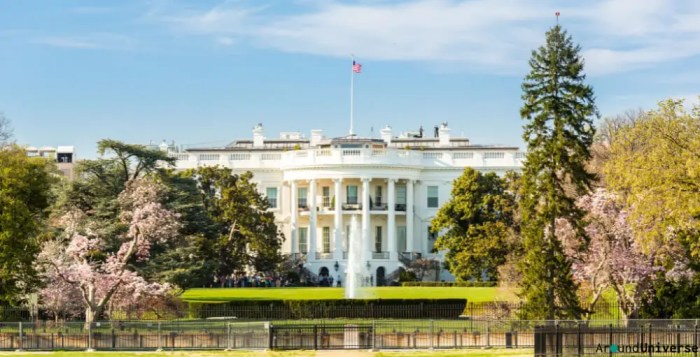Plural executive pros and cons – Plural executive systems, characterized by shared power among multiple individuals or bodies, offer a unique blend of advantages and drawbacks. From enhanced decision-making to potential leadership challenges, this engaging exploration delves into the intricate world of plural executives, unraveling their pros and cons with captivating insights.
Delve into the intricacies of plural executive systems, where power is shared among multiple individuals or bodies, offering a fascinating balance of benefits and challenges. From enhanced decision-making to potential leadership struggles, this comprehensive analysis unveils the nuances of plural executive arrangements.
Definition of Plural Executive

A plural executive refers to a system of governance where power is shared among multiple individuals or bodies, rather than being concentrated in the hands of a single leader.
This power-sharing arrangement ensures that no one individual or body has absolute control over decision-making, promoting accountability and preventing the abuse of power.
Pros of Plural Executive

Plural executive systems offer several advantages over single-leader models. One of the key benefits is the distribution of power, which can lead to more balanced and well-rounded decision-making.
Examples of successful plural executive models can be found in various countries worldwide. Switzerland, for instance, has a seven-member Federal Council that serves as the country’s collective head of state and government. This arrangement has fostered stability and consensus-based decision-making, contributing to Switzerland’s reputation as a prosperous and well-governed nation.
Shared Decision-Making
In a plural executive system, multiple individuals share the responsibility for decision-making. This can lead to more comprehensive and informed decisions, as different perspectives and expertise are brought to the table. By fostering collaboration and discussion, plural executives can minimize the risk of impulsive or ill-informed decisions.
Accountability and Transparency
With multiple individuals sharing executive power, there is greater accountability and transparency in the decision-making process. Each member of the executive body is held responsible for their actions, and their decisions are subject to public scrutiny. This can help prevent corruption and ensure that the interests of the people are prioritized.
Cons of Plural Executive
While plural executive systems can offer certain advantages, they also come with potential drawbacks.
One significant concern is the risk of power struggles and lack of clear leadership. With multiple individuals sharing executive authority, it can be challenging to establish a clear hierarchy and decision-making process. This can lead to conflicts, deadlocks, and a lack of accountability.
Examples of Failed or Ineffective Plural Executive Arrangements
- The Roman Republic’s dual consulship system often resulted in power struggles and political instability.
- The Weimar Republic in Germany, which had a president and a chancellor, faced challenges due to power conflicts and a lack of clear leadership.
Comparison of Plural Executive vs. Single Executive

Both plural and single executive systems have their own advantages and disadvantages. Let’s compare them in a tabular format to highlight their key differences.
Decision-Making
Decision-making in a plural executive system involves multiple individuals, leading to more deliberation and consensus. In contrast, a single executive has the final say, resulting in faster and more decisive decision-making.
| System | Pros | Cons |
|---|---|---|
| Plural Executive | – More inclusive and representative
|
– Can be slow and indecisive
|
| Single Executive | – Swift and decisive decision-making
|
– Less inclusive and representative
|
Accountability
In a plural executive system, accountability is shared among multiple individuals, making it harder to pinpoint responsibility. In a single executive system, the buck stops with one person, ensuring clear accountability.
| System | Pros | Cons |
|---|---|---|
| Plural Executive | – Collective responsibility makes it harder to evade accountability
|
– Difficult to assign individual blame
|
| Single Executive | – Clear lines of accountability
|
– Concentration of power in one person
|
Leadership
A plural executive system fosters shared leadership, while a single executive system provides centralized leadership. Each system has its own advantages and drawbacks in terms of providing guidance and direction.
| System | Pros | Cons |
|---|---|---|
| Plural Executive | – Collective wisdom and experience
|
– Lack of a single, clear leader
|
| Single Executive | – Strong and decisive leadership
Exploring the advantages and disadvantages of a plural executive system can be a complex task, but resources like vocab workshop level c unit 9 can provide valuable insights. Understanding the nuances of such a system requires a strong vocabulary, and this resource offers a comprehensive exploration of relevant terms. By delving into the intricacies of plural executive structures, we can gain a deeper appreciation for the complexities and potential benefits of this governance model.
|
– Limited diversity of perspectives
|
Variations of Plural Executive

Plural executive systems exhibit diverse variations, each with distinct roles and responsibilities. Understanding these variations is crucial for comprehending the complexities of plural executive arrangements.
Collegial Executive
In a collegial executive system, power is shared among a group of individuals, often referred to as a council or board. Each member holds equal authority and collectively makes decisions through consensus or majority vote. The roles and responsibilities are distributed among the members, ensuring a balanced and collaborative approach to governance.
- Example: Switzerland’s Federal Council, consisting of seven members who jointly exercise executive authority.
Dual Executive
A dual executive system features two distinct leaders, each with specific powers and responsibilities. This arrangement often involves a president and a prime minister, with the former serving as the head of state and the latter as the head of government.
- Example: France’s Fifth Republic, where the president appoints the prime minister and has the power to dissolve the National Assembly, while the prime minister is responsible for government policies and administration.
Semi-Presidential Executive
A semi-presidential executive system combines elements of both presidential and parliamentary systems. The president is directly elected by the people and holds significant powers, but is also accountable to a parliament that can pass a motion of no confidence and force the president’s resignation.
- Example: Russia’s executive branch, where the president is elected by popular vote and appoints the prime minister, who is then approved by the Duma (parliament).
Historical Perspectives on Plural Executive: Plural Executive Pros And Cons
The concept of plural executives has a rich history, with its origins tracing back to ancient times. Throughout history, various civilizations have experimented with different forms of shared leadership, each leaving a unique mark on the evolution of governance.
Ancient Origins
Early examples of plural executives can be found in ancient Mesopotamia and Egypt, where councils of elders or priests shared decision-making responsibilities. In ancient Greece, the city-state of Athens implemented a system of rotating leadership, where multiple archons held executive authority for a limited period.
Medieval Europe
During the Middle Ages in Europe, the concept of a plural executive resurfaced in the form of councils and committees. The Holy Roman Empire, for instance, was governed by a group of electors who collectively elected the emperor. Similarly, in the Italian city-states, councils of merchants and artisans played a significant role in decision-making.
Modern Era
The modern era witnessed a resurgence of interest in plural executive systems. The Swiss Confederation, established in 1848, adopted a seven-member Federal Council as its executive body. This model has served as an inspiration for other countries, such as Uruguay and Bosnia and Herzegovina, which have also implemented plural executive arrangements.
Factors Influencing Adoption and Abandonment
The adoption and abandonment of plural executive systems have been influenced by various factors, including:
- Political Culture:Societies with a strong tradition of consensus and collaboration are more likely to embrace plural executives.
- Historical Context:Plural executives often emerge in times of political instability or transition, as a means to balance power and prevent tyranny.
- Economic Conditions:Economic crises or periods of rapid growth can lead to a reassessment of governance structures, sometimes resulting in the adoption or abandonment of plural executives.
- Technological Advancements:Improvements in communication and transportation have made it easier for multiple executives to collaborate and share decision-making responsibilities.
Case Studies of Plural Executive

The implementation of plural executive systems has varied across countries, resulting in both successes and failures. By examining case studies, we can identify factors that have contributed to their effectiveness or ineffectiveness.
Switzerland
Switzerland has a long-standing tradition of plural executive, with a seven-member Federal Council serving as the collective head of government. The council is elected by the Federal Assembly and represents a broad range of political parties. This system has fostered stability and consensus-building, allowing Switzerland to maintain a high level of economic and social development.
Uruguay, Plural executive pros and cons
Uruguay adopted a plural executive system in 1997, with a president and a vice president who share executive power. The system has faced challenges in achieving coordination and accountability. However, it has also been credited with reducing presidential dominance and promoting dialogue among political parties.
Bosnia and Herzegovina
Bosnia and Herzegovina’s plural executive system, known as the Presidency, consists of three members representing the Bosniak, Croat, and Serb ethnic groups. The system has been criticized for its complexity and potential for gridlock. It has also been linked to ethnic tensions and political instability.
Factors Contributing to Effectiveness
- Broad representation and inclusivity
- Clear division of responsibilities
- Strong institutional mechanisms for coordination and accountability
- A culture of consensus-building and compromise
Factors Contributing to Ineffectiveness
- Excessive fragmentation and lack of coordination
- Ambiguous or overlapping roles and responsibilities
- Dominance by one executive member
- Political polarization and gridlock
Emerging Trends in Plural Executive

As the world grapples with increasingly complex governance challenges, the plural executive model is gaining traction. This section delves into emerging trends and innovative approaches in the implementation of plural executive systems.
One notable trend is the rise of hybrid executive arrangements. These systems combine elements of both plural and single executive models, allowing for greater flexibility and adaptability. For example, some countries have adopted a “semi-presidential” system, where a popularly elected president shares power with a prime minister and cabinet.
Innovative Approaches
Another emerging trend is the use of technology to enhance the effectiveness of plural executive systems. Digital platforms and data analytics are being employed to facilitate communication, coordination, and decision-making among multiple executives.
Future of Plural Executive
Looking ahead, the future of plural executive arrangements appears promising. As governance challenges continue to evolve, the flexibility and adaptability of these systems will become increasingly valuable. Hybrid models and innovative approaches will likely continue to play a significant role in shaping the future of executive governance.
User Queries
What is the primary advantage of a plural executive system?
Shared decision-making, leading to more balanced and accountable governance.
What is a potential drawback of a plural executive system?
Power struggles and lack of clear leadership can arise, hindering effective decision-making.